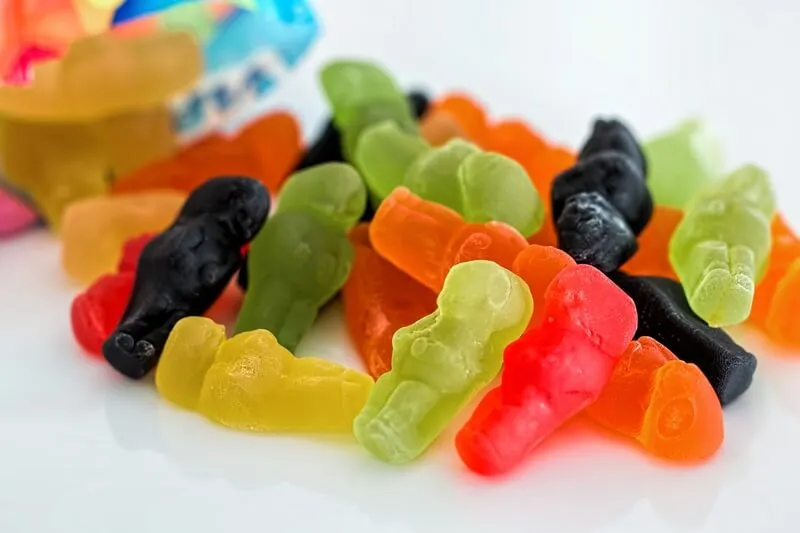As loving dog owners, we often share our lives, our homes, and sometimes even our food with our furry companions. While it’s tempting to slip them a piece of your dinner, not all human foods are safe for dogs. In fact, some common items can be highly toxic, leading to severe health complications or even death. Understanding What Meat Should You Not Feed Your Dog, alongside other harmful ingredients, is crucial for ensuring their well-being. This comprehensive guide will equip you with the knowledge to protect your beloved canine from culinary dangers, ensuring they lead a healthy, happy life free from avoidable risks.
The Hidden Dangers in Meats for Your Canine Companion
When considering what meat should you not feed your dog, it’s not always about a specific type of animal, but rather the way it’s prepared, its condition, or even specific parts of it. Many common practices in human food preparation can turn an otherwise healthy protein source into a significant health hazard for dogs.
Raw or Undercooked Meats: A Bacterial and Parasitic Threat
While some advocate for raw diets, feeding your dog raw or undercooked meat comes with inherent risks. Uncooked meats can harbor dangerous bacteria such as Salmonella, E. coli, and Listeria, which can cause severe gastrointestinal distress, vomiting, diarrhea, and even systemic infections in dogs. These bacteria can also be shed in their feces, posing a risk to other pets and humans in the household. Beyond bacteria, raw meats can contain parasites like Toxoplasma gondii (found in pork, lamb) or Trichinella spiralis (pork), leading to serious parasitic diseases. It’s a risk that most veterinarians advise against, making thoroughly cooked meat the safer option for your dog. For more insights on canine nutrition, explore what are good things for dogs to eat.
Cooked Bones: Choking Hazards and Internal Damage
It might seem natural to give your dog a bone, but cooked bones are among the top items on the list of what meat should you not feed your dog. Unlike raw bones, which are somewhat pliable, cooked bones become brittle and can splinter easily. These sharp fragments can cause a myriad of problems:
- Choking: Fragments can get lodged in the throat.
- Digestive Blockages: Pieces can obstruct the esophagus, stomach, or intestines.
- Internal Injuries: Sharp edges can puncture the digestive tract, leading to life-threatening peritonitis.
- Dental Damage: Hard bones can also fracture or chip your dog’s teeth.
Always err on the side of caution and keep cooked bones out of your dog’s reach.
Processed Meats and Deli Slices: High Sodium and Unhealthy Additives
Processed meats, such as hot dogs, bacon, sausages, ham, and deli slices, are generally not suitable for dogs. These products are often loaded with sodium, which can lead to sodium ion poisoning or salt toxicity. Symptoms can include excessive thirst, urination, vomiting, diarrhea, and in severe cases, tremors, seizures, and kidney damage. Furthermore, processed meats frequently contain nitrates, nitrites, and artificial preservatives that are unhealthy for dogs, along with high levels of saturated fats. While a tiny piece as a rare treat might not cause immediate harm, regular consumption of these items is detrimental to a dog’s long-term health.
Fatty Trimmings and Excess Fat: A Recipe for Pancreatitis
Whether from steak, chicken, or other meats, fatty trimmings are another item on the list of what meat should you not feed your dog. While dogs need fat in their diet, excessive amounts, especially from human-prepared foods, can lead to severe digestive upset, including vomiting and diarrhea. More dangerously, a sudden influx of high-fat food can trigger pancreatitis – an inflammation of the pancreas. This condition is incredibly painful and can be life-threatening, often requiring hospitalization. Certain breeds, such as Miniature Schnauzers and Yorkshire Terriers, are particularly prone to pancreatitis. If you notice your dog hunched over in pain or showing signs of severe abdominal discomfort, contact your vet immediately.
 A delicious chocolate bar with a 'No Dogs' sign, highlighting why dogs shouldn't eat chocolate.
A delicious chocolate bar with a 'No Dogs' sign, highlighting why dogs shouldn't eat chocolate.
Heavily Seasoned or Marinated Meats: Toxic Ingredients Hidden Within
When preparing meat for human consumption, we often add seasonings, spices, and marinades. Many of these ingredients are toxic to dogs:
- Onions and Garlic: As we’ll discuss further, these are highly toxic and can cause red blood cell damage. They are often found in rubs and marinades.
- Excessive Salt: Already mentioned, but seasoning often means high salt content.
- Spices: While some spices are harmless, many can cause gastrointestinal irritation.
- Capsaicin (Chili Powder, Paprika): Can cause extreme discomfort, mouth burning, and digestive upset.
- Herbs: Some herbs are safe, but others are not. When in doubt, avoid.
It’s always best to offer your dog plain, unseasoned, and thoroughly cooked lean meat, if any at all.
Spoiled or Rotten Meat: A Source of Dangerous Toxins
Just like humans, dogs should not eat spoiled or rotten meat. While dogs have stronger stomachs than humans, decaying meat can contain dangerous bacteria and mycotoxins (toxins produced by mold) that can lead to severe food poisoning. Symptoms can range from mild gastrointestinal upset to serious neurological issues like muscle tremors and seizures. Always dispose of old or rotten foods securely, ensuring your curious canine cannot access them.
Beyond Meat: Other Common Human Foods Toxic to Dogs
Even if you’re vigilant about what meat should you not feed your dog, it’s important to remember that many other human foods pose a significant threat. Here’s a rundown of other items to keep out of your dog’s bowl.
Chocolate: A Potentially Fatal Indulgence
Chocolate contains theobromine and caffeine, both powerful stimulants that dogs cannot metabolize efficiently. These substances can cause a rapid heart rate, high blood pressure, tremors, seizures, and even death. The darker the chocolate, the higher the concentration of these toxins, making baker’s chocolate and dark chocolate particularly dangerous. Smaller dogs are also more susceptible to lower doses.
 A dog looking at a piece of chewing gum, illustrating the dangers of gum and candy.
A dog looking at a piece of chewing gum, illustrating the dangers of gum and candy.
Xylitol: The Sweetener Stealth Threat
Xylitol is an artificial sweetener found in many sugar-free products like gum, candy, certain peanut butters, desserts, and even some medications. Ingesting xylitol can cause a rapid and severe drop in blood sugar (hypoglycemia), leading to disorientation, collapse, and seizures. In some cases, it can cause liver failure. Always check ingredient labels before sharing any human food or product with your dog.
Grapes and Raisins: Kidney Adversaries
Grapes and raisins are highly toxic to dogs, with even small amounts capable of causing acute kidney failure. The exact mechanism of toxicity is unknown, but the consequences can be devastating. Keep all forms of grapes and raisins – fresh, dried, or in baked goods like cookies – well out of your dog’s reach. If you suspect your dog has eaten any, seek immediate veterinary attention.
 Fresh grapes, symbolizing the danger they pose to dogs.
Fresh grapes, symbolizing the danger they pose to dogs.
Onions, Garlic, and Chives: Allium Family Dangers
Members of the Allium family, including onions, garlic, leeks, and chives, contain compounds that can damage a dog’s red blood cells, leading to anemia. Garlic is generally considered more potent than onions. Symptoms may include lethargy, weakness, pale gums, and dark urine. Whether raw, cooked, dried, or powdered, these ingredients are dangerous. Be especially mindful of them in human dishes, seasonings, and baby foods. For a deeper dive into food safety for pets, check out what human food can dogs eat and not eat.
Macadamia Nuts: The Enigmatic Toxin
These nuts, often found in cookies and other baked goods, can cause weakness, tremors, hyperthermia, vomiting, and depression in dogs. While rarely fatal, the symptoms can be distressing and debilitating. The exact toxic agent is still unknown, but it’s best to keep macadamia nuts completely off-limits.
Avocados: A Fruit with a Catch
Avocados contain a fungicidal toxin called persin. While generally safe for humans, persin can be harmful to dogs, especially in the leaves, skin, and pit of the fruit. Although a small amount of the flesh might not cause a severe reaction in all dogs, it’s safer to avoid giving them any avocado to prevent potential gastrointestinal upset or other adverse effects.
Alcohol: No Buzz for Pups
Alcohol, in any form, is highly toxic to dogs. It can cause severe intoxication, leading to vomiting, diarrhea, decreased coordination, central nervous system depression, tremors, difficulty breathing, coma, and even death. Small breeds are particularly vulnerable due to their lower body weight. Always ensure alcoholic beverages are secured, especially during social gatherings.
Caffeine (Coffee, Tea Leaves): Overstimulation Risks
Similar to chocolate, caffeine is a stimulant found in coffee, tea, energy drinks, and some medications. It can cause hyperactivity, elevated heart rate, tremors, and seizures in dogs. Even used coffee grounds and tea bags retain enough caffeine to be dangerous. Properly dispose of these items and keep them out of your dog’s reach.
Raw Yeast Dough: The Expanding Danger
Uncooked yeast dough can pose a dual threat to dogs. The warmth of a dog’s stomach can cause the yeast to ferment and expand, leading to painful gas, bloating, and potentially a life-threatening condition called Gastric Dilatation-Volvulus (GDV) or bloat, where the stomach twists. Additionally, the fermenting yeast produces alcohol, which can lead to alcohol poisoning.
Excessive Salt: More Than Just a Flavor Enhancer
While a small amount of salt is essential for dogs, excessive intake, often from salty snacks like chips, pretzels, or even table salt, can lead to sodium ion poisoning. This can cause extreme thirst, frequent urination, vomiting, diarrhea, and in severe cases, neurological symptoms like tremors and seizures, potentially damaging the kidneys.
Gum and Candy: Choking and Hidden Toxins
Beyond the risk of xylitol, gum and candy present other hazards. Chewy candies can be a choking hazard or cause intestinal blockages if swallowed. Hard candies can also lead to fractured teeth. Always keep these sugary treats away from your dog.
Recognizing the Symptoms of Food Poisoning in Dogs
Even with the best precautions, accidents can happen. Knowing the signs of food poisoning or toxicity can help you act quickly. Symptoms vary depending on the toxin and the amount ingested, but common indicators include:
- Vomiting
- Diarrhea
- Lethargy or weakness
- Loss of appetite
- Excessive thirst or urination
- Abdominal pain or discomfort (e.g., hunched posture)
- Tremors or seizures
- Disorientation or uncoordinated movements
- Pale gums
- Increased heart rate
- Difficulty breathing
If you observe any of these symptoms or suspect your dog has eaten something harmful, do not delay seeking professional help.
 A dog in distress, with text highlighting dog poison emergency tips.
A dog in distress, with text highlighting dog poison emergency tips.
Preventing Accidental Ingestion: A Proactive Approach
Prevention is always the best strategy when it comes to keeping your dog safe from toxic foods, including understanding what meat should you not feed your dog.
- Secure Storage: Store all human foods, especially those known to be toxic, in secure cabinets or containers that your dog cannot access.
- Supervise Meal Times: Never leave toxic foods unattended, especially when your dog is around. Be mindful during gatherings or parties where food and drinks might be left within reach.
- Educate Family Members: Ensure everyone in your household, including children and guests, knows which foods are off-limits for your dog.
- Pet-Proof Garbage: Use garbage cans with secure lids to prevent your dog from scavenging for scraps, as spoiled food can be a significant hazard.
- Check Labels: Always read ingredient labels on human foods before offering them to your dog, especially for items containing artificial sweeteners like xylitol.
- Stick to Dog Food: The safest approach is to primarily feed your dog a high-quality, vet-approved dog food. If you wish to give treats, opt for dog-specific treats or safe human foods like plain cooked lean meats (chicken breast, turkey), certain fruits (apples without seeds, blueberries), or vegetables (carrots, green beans). For safe vegetable options, refer to our guide on what vegetables should you not feed a dog.
Emergency Protocol: What to Do if Your Dog Eats Something Harmful
Despite your best efforts, accidents can happen. If you suspect your dog has ingested a harmful food or substance, immediate action is crucial:
- Stay Calm: Panic can make the situation worse. Try to remain composed.
- Contact Your Veterinarian Immediately: This is the most critical step. Provide them with as much information as possible: what your dog ate, approximately how much, when they ate it, and any symptoms you’ve observed.
- Call Animal Poison Control: If your vet is unavailable, or you need immediate expert advice, contact a dedicated animal poison control center. In the US, the ASPCA Animal Poison Control Center (APCC) is available 24/7 at 888-426-4435. A consultation fee may apply.
- Do Not Induce Vomiting Without Professional Guidance: Inducing vomiting can sometimes do more harm than good, depending on the substance ingested. Only do so under the direct instruction of a veterinarian or poison control expert.
- Bring the Suspected Item (if possible): If you can, bring a sample or the packaging of the ingested item to the vet. This can help them quickly identify the toxin and administer the correct treatment.
Depending on the situation, your vet may need to perform diagnostic tests, induce vomiting, administer activated charcoal, provide IV fluids, or prescribe medications. Hospitalization might be necessary in severe cases. Being prepared and acting swiftly can make a significant difference in your dog’s recovery. Understanding the comprehensive list of dangerous foods, including what meat should you not feed your dog, empowers you to be a more responsible and vigilant pet owner.
Conclusion
The bond we share with our dogs is incredibly special, and part of nurturing that bond involves protecting them from harm. By understanding what meat should you not feed your dog, along with the broader spectrum of toxic human foods, you can significantly reduce the risk of accidental poisoning. From the dangers of raw meat and cooked bones to the hidden threats in chocolate and xylitol, vigilance and knowledge are your best tools. Always prioritize a safe, balanced diet of dog-specific food and be proactive in pet-proofing your home. In emergencies, swift action and professional veterinary care are paramount. Stay informed, stay vigilant, and ensure your loyal companion enjoys a long, healthy life by your side. For further reading on managing your dog’s health and behavior, you might find our article what should i do if my dog keeps eating grass helpful.
